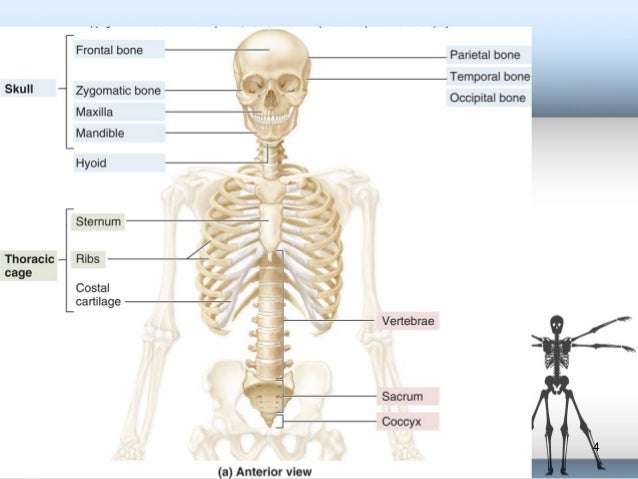The mammalian skeletal system is group into two major parts:
- Axial skeleton which comprises of the skull, vertebral column, ribs and sternum.

- Appendicular skeleton is made up of the limbs girdles, pectoral and pelvic girdles and the limbs which is fore limbs and hind limbs. The skull is made up of several flat bones joined together by means of joint called sutures. The three major parts of the skull are: (i) Cranium or brain box.
(ii) Facial skeleton (iii) Jaws (upper & lower)
https://www.slideshare.net/slideshow/embed_code/key/Fj6iFPEhk4u10FAppendicular skeleton from Dr. Armaan Singh
Functions of the skull
- It protects the brain.
- It gives shape to the head.
- It protects vital organs in the head e. g eye, nose, ear.
- It bears the teeth which help in grinding of food.
VERTEBRAL COLUMN
The vertebral column is the central supporting structure of the skeleton, it is made up of five group of bones called vertebrae in mammals. In human it consists of 33 vertebrae. The vertebrae are held to one another with a strong ligament having compressible cartilage pads called intervertebral disc between the consecutive vertebrae.
| Types of vertebrae | Man | Rabbit | Rat |
| Cervical | 7 | 7 | 7 |
| Thoracic | 12 | 12 | 13 |
| Lumbar | 5 | 7 | 6 |
| Sacral | 5 | 3-4 | 4 |
| Caudal | 4 | 16 | 27-30 |
Read our disclaimer.
AD: Take Free online baptism course: Preachi.com 
